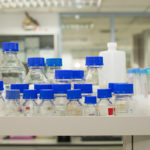Judith Brouwer
I’ve spent my pipetting days working on trinucleotide repeat disorders, first during my PhD. During my postdoc, I dived into the fascinating field of epigenetics. I then left the lab to focus on writing about science. A while ago, I decided to change fields and dedicate my time and thoughts to sustainability research.
Articles by Judith Brouwer
Unlike Nick Oswald I think I can multitask in the lab. If I organize my day efficiently and perform lots of experiments and other tasks in parallel, I get more done. But there is a school of thought – the one described in Nick’s article – that says no-one can really multitask, that our brains…
Fact: The vast majority of professors are male. By the time you reach the top of the ladder, only roughly 20% of professors are female In most European countries and in quite a few countries the figure lingers around a depressing 15%. Biosciences are no exception. The balance is being redressed but only very slowly.…
In a recent article, I gave some tips about how to obtain good results with sequencing DNA after bisulfite conversion (it contains some tips that apply to the approach described in this article, too). Bisulfite sequencing is a very useful technique if you want to know the methylation status of every CpG in your genomic…
A commonly used technique in epigenetics is Chromatin Immunoprecipitation, or ChIP for short. This technique can show you whether a certain protein (e.g. transcription factor or histone modification) binds to DNA, when in its native conformation, namely chromatin. Insightful, but difficult This information can be very insightful, but difficult to obtain. Most protocols and suggestions…
The importance of epigenetics in biology is increasingly acknowledged (if you’re not convinced yet, read my crash course). One commonly studied epigenetic mark is CpG methylation: cytosines that are directly followed by a guanine nucleotide (indicated by CpG), can be methylated, unlike non-CpG Cs. Since attachment of a methyl group to a cytosine can affect…
Every once in a while a big case of scientific fraud reaches public attention. Does that mean these well-known cases are exceptions, a few rotten apples…or might the rest of the fruit bowl also be affected? A major part of a scientist’s work is to secure funding for future research. Obtaining funding is strongly connected…
Rumour has it that many people who work in a lab enjoy cooking. And, when asked by a non-biologist family member how they spend their days in the laboratory, molecular biologists might answer that doing experiments is similar to cooking. Apart from the organisational parallels that can be drawn between following a protocol and a…
Like many scientists, I don’t consider myself a statistics expert. But I am determined to do things right in my science, and that includes statistics. In my experience, a lot of scientists who are “scared” of statistics fall into the trap of ignoring the existence of anything beyond a t-test. But using the right method…
After having discussed what epigenetic mechanisms are and how we’ve learnt about what they do, it is now time to look into how epigenetics affect our lives if things do not go the way they are supposed to go. I hope I have convinced you that epigenetic processes are vital for an organism, in development…
Epigenetics is the most rapidly expanding field in biology. In the second article in this series, I discussed which experimental techniques have been crucial in gaining insight into epigenetic processes. I will now shed light on what those and other methods have taught us. As described in the first article, it has been long understood…
In the past decade, important advances have been made in the field of epigenetics. Obviously, unraveling epigenetic mechanisms has been greatly facilitated by technological developments. I’ll try to give you an impression of the types of experiments that have helped fuel those new and exciting insights. Yevgeniy Grigoryev has recently written an article on DNA…
These days, epigenetics is a fast moving field. I don’t remember having learnt about it during my biomedical studies, some 10 years ago. Nowadays, there seems to be no way around it when studying health and disease. Increasing interest combined with recent technological breakthroughs have led to quickly expanding knowledge of its abundant and important…
If you use a human cell line in your research, have you wondered where, or who, it came from? I never gave it much thought, until I read Rebecca Skloot’s book, The Immortal Life of Henrietta Lacks. In 1951, cervical tumour cells were taken from Henrietta Lacks and put into culture, to divide endlessly and…










